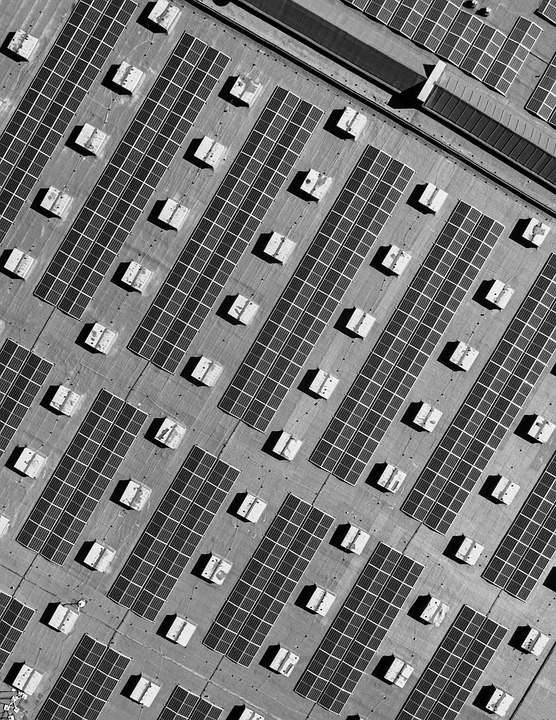Powering the Future: The Rise of Renewable Energy Solutions
The world is at a pivotal moment in history, as the need for sustainable and environmentally friendly energy sources becomes increasingly urgent. With the rise of global temperatures, melting ice caps, and extreme weather events, it has become clear that we must shift away from fossil fuels and embrace renewable energy solutions. In this article, we will explore the growing trend of renewable energy and how it is shaping the future of power generation.
The Benefits of Renewable Energy
Renewable energy sources, such as solar, wind, hydro, and geothermal power, offer numerous benefits over traditional fossil fuels. One of the main advantages of renewable energy is that it is clean and does not produce harmful greenhouse gas emissions. This helps to reduce air pollution and combat climate change. In addition, renewable energy sources are abundant and free, unlike finite fossil fuels that are subject to depletion and price fluctuations.
Another benefit of renewable energy is that it creates jobs and stimulates economic growth. The renewable energy sector has seen rapid expansion in recent years, leading to the creation of millions of new jobs worldwide. This not only boosts the economy but also helps to reduce unemployment and poverty in many regions.
Furthermore, renewable energy sources are more reliable and resilient than fossil fuels. Solar panels and wind turbines can be installed in remote locations to provide power to off-grid communities. This helps to increase energy access and reduce reliance on centralized power plants that are vulnerable to disruptions and outages.
The Rise of Solar Power
One of the fastest-growing renewable energy sources is solar power. Solar panels convert sunlight into electricity, providing a clean and sustainable source of energy. The cost of solar panels has plummeted in recent years, making solar power more affordable and accessible to homeowners, businesses, and governments.
Solar power is versatile and can be used in a variety of applications, from residential rooftops to large-scale solar farms. In sunny regions, solar power can provide a significant portion of the electricity demand, reducing the need for coal and natural gas power plants.
In addition to generating electricity, solar power can also be used for heating water, powering vehicles, and charging electronic devices. As technology advances, solar panels are becoming more efficient and durable, making them an attractive option for sustainable energy production.
The Promise of Wind Energy
Another promising renewable energy source is wind power. Wind turbines harness the power of the wind to generate electricity, offering a clean and renewable alternative to fossil fuels. Wind energy is abundant and widely available, making it a cost-effective solution for many regions.
Wind farms can be installed on land or offshore to capture the strong and consistent winds that blow across the earth’s surface. As wind turbine technology improves, the efficiency and capacity of wind farms continue to increase, making them a competitive option for power generation.
In addition to producing electricity, wind energy can help to reduce carbon emissions and combat climate change. By replacing coal and natural gas power plants with wind farms, we can significantly reduce our reliance on fossil fuels and transition to a more sustainable energy future.
The Role of Hydroelectric Power
Hydroelectric power has long been a reliable source of renewable energy, generating electricity from flowing water. Hydropower plants use dams and reservoirs to control the flow of water and produce electricity through turbines. This clean and renewable energy source is ideal for regions with abundant water resources, such as rivers and lakes.
Hydropower is a flexible and efficient energy source that can be used to meet peak electricity demand and stabilize the grid. By storing water in reservoirs, hydropower plants can release water during periods of high demand to generate electricity, providing a reliable source of power for homes, businesses, and industries.
In addition to electricity generation, hydropower can also be used for irrigation, flood control, and water supply. By harnessing the power of water, we can create sustainable and resilient energy systems that benefit both people and the planet.
The Potential of Geothermal Energy
Geothermal energy is a promising renewable energy source that harnesses the heat from the earth’s core to generate electricity. Geothermal power plants use underground reservoirs of hot water and steam to drive turbines and produce electricity. This clean and reliable energy source is ideal for regions with active tectonic activity, such as geysers and hot springs.
Geothermal energy has the potential to provide a continuous and stable source of electricity, as the heat from the earth’s core is virtually limitless. By tapping into geothermal reservoirs, we can reduce our reliance on fossil fuels and transition to a more sustainable energy future.
In addition to electricity generation, geothermal energy can also be used for heating and cooling buildings, greenhouse agriculture, and industrial processes. By utilizing the heat from the earth, we can create efficient and cost-effective energy systems that benefit both the environment and society.
Conclusion
The rise of renewable energy solutions is transforming the way we power our world, offering clean, reliable, and sustainable alternatives to fossil fuels. Solar, wind, hydro, and geothermal power are leading the way in the transition to a more sustainable energy future, providing numerous benefits for the environment, economy, and society.
As we continue to invest in renewable energy technologies and infrastructure, we can reduce our carbon footprint, create jobs, and improve energy access for all. By embracing renewable energy solutions, we can power the future in a clean and sustainable way, ensuring a brighter and more prosperous tomorrow for generations to come.











